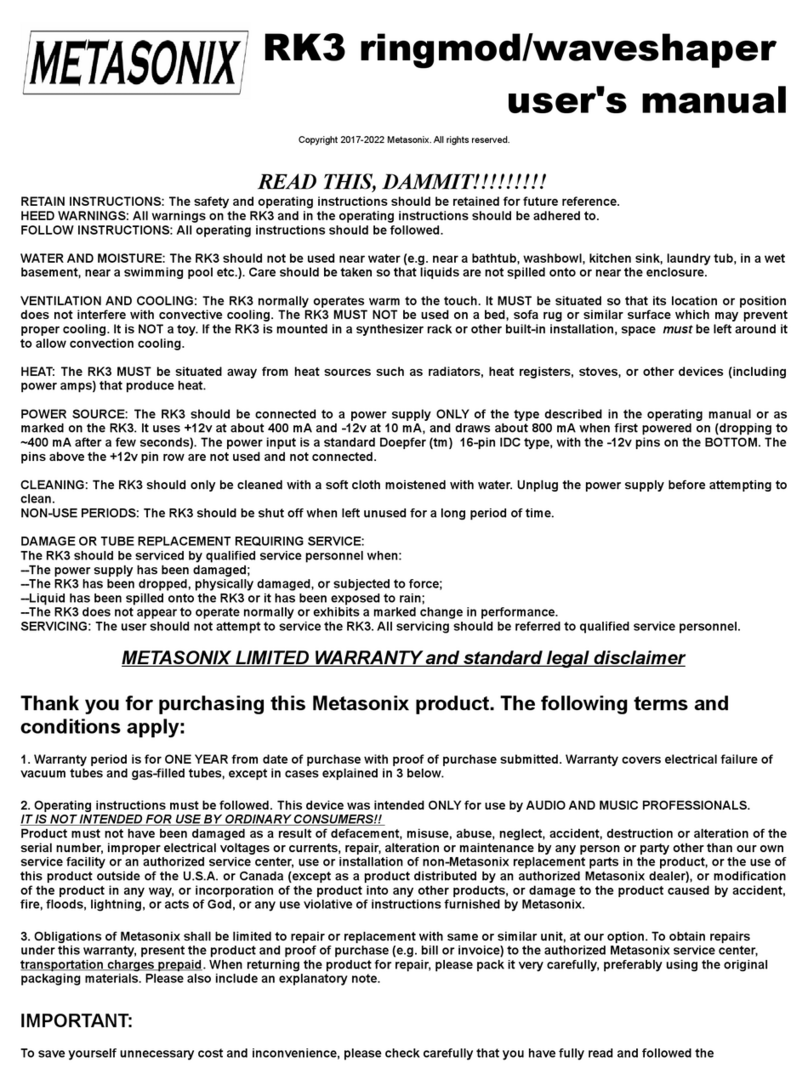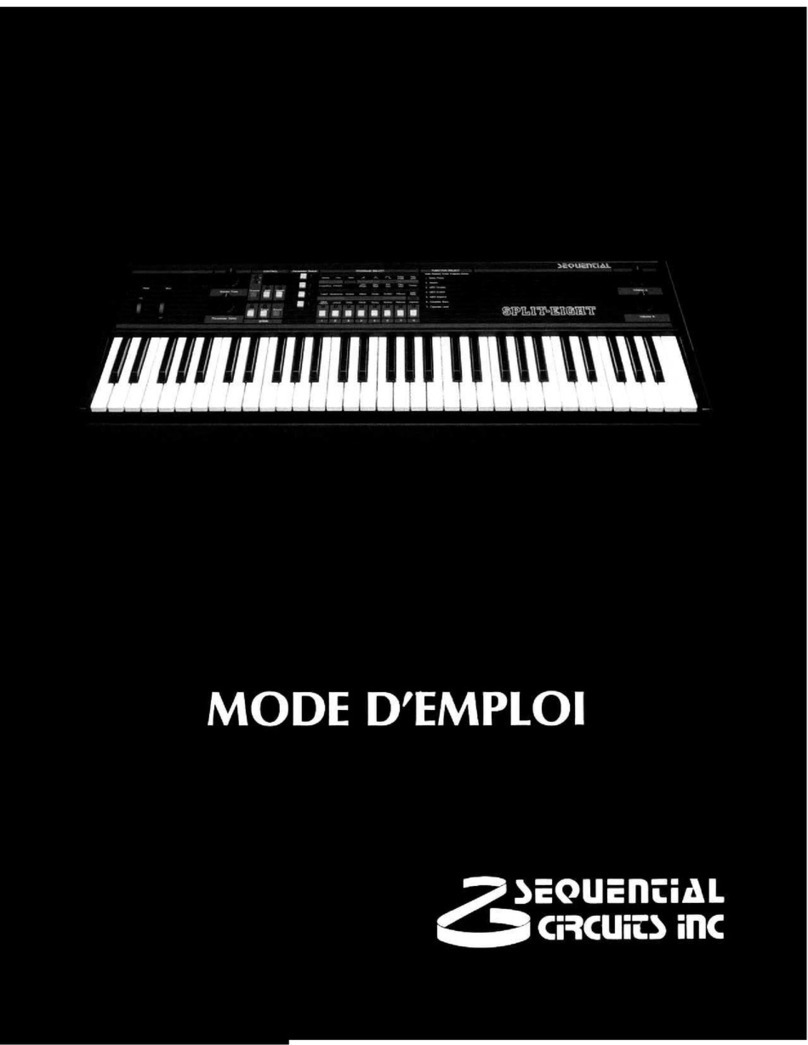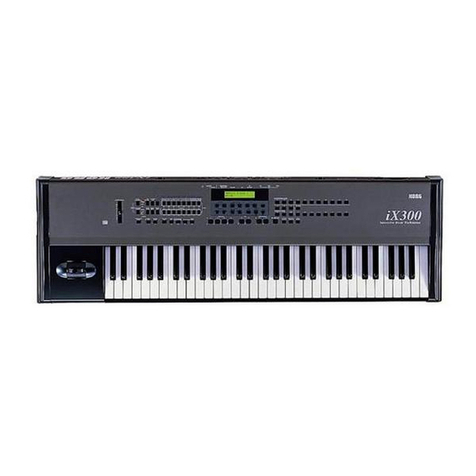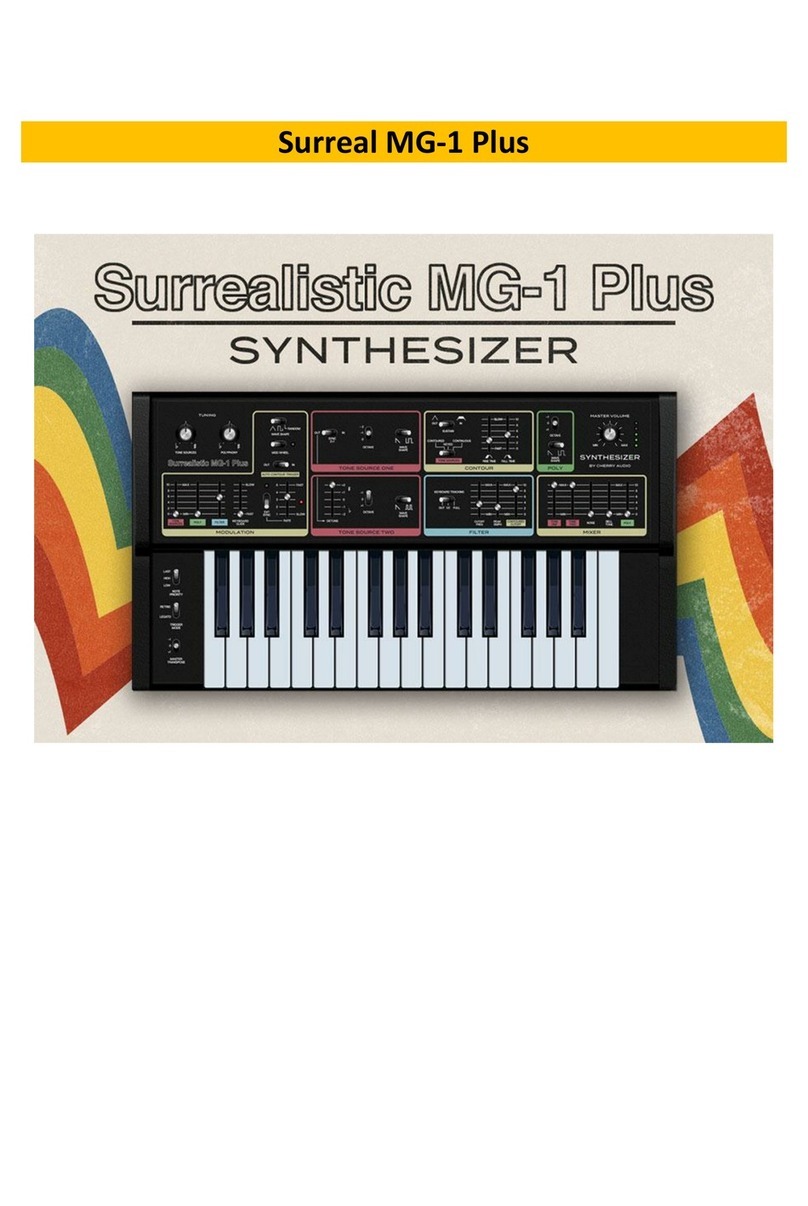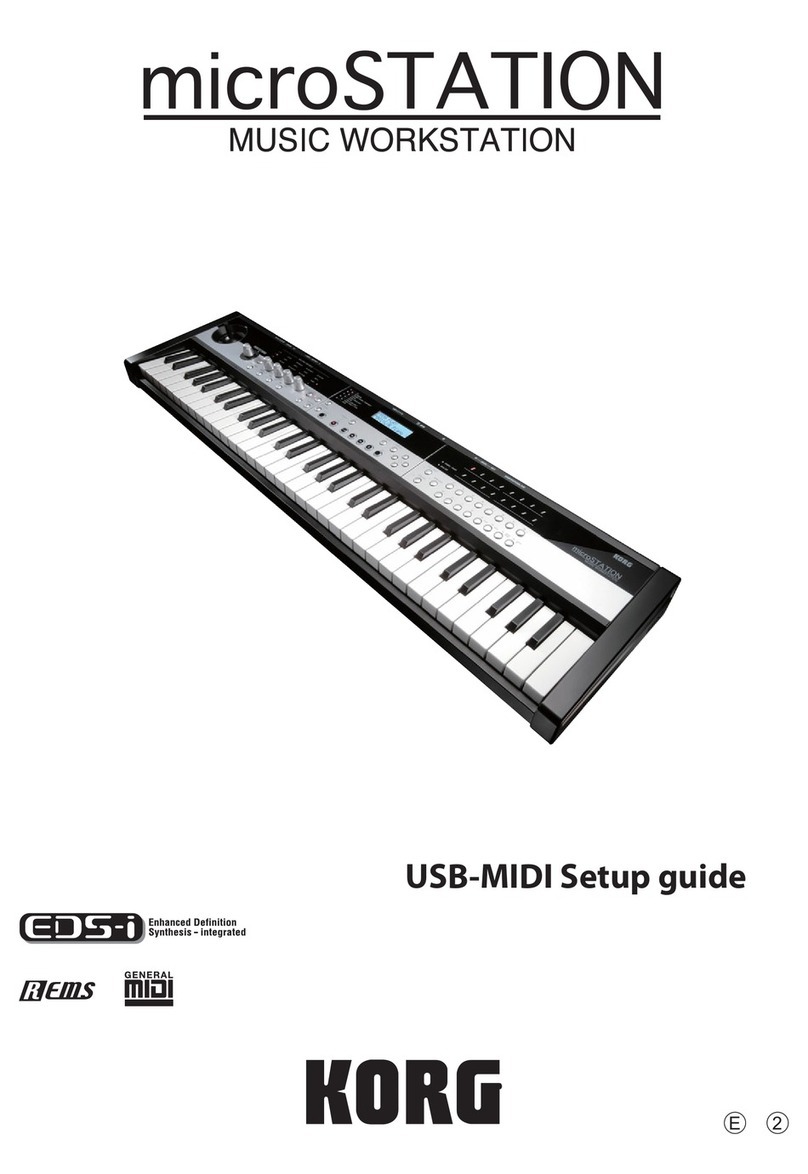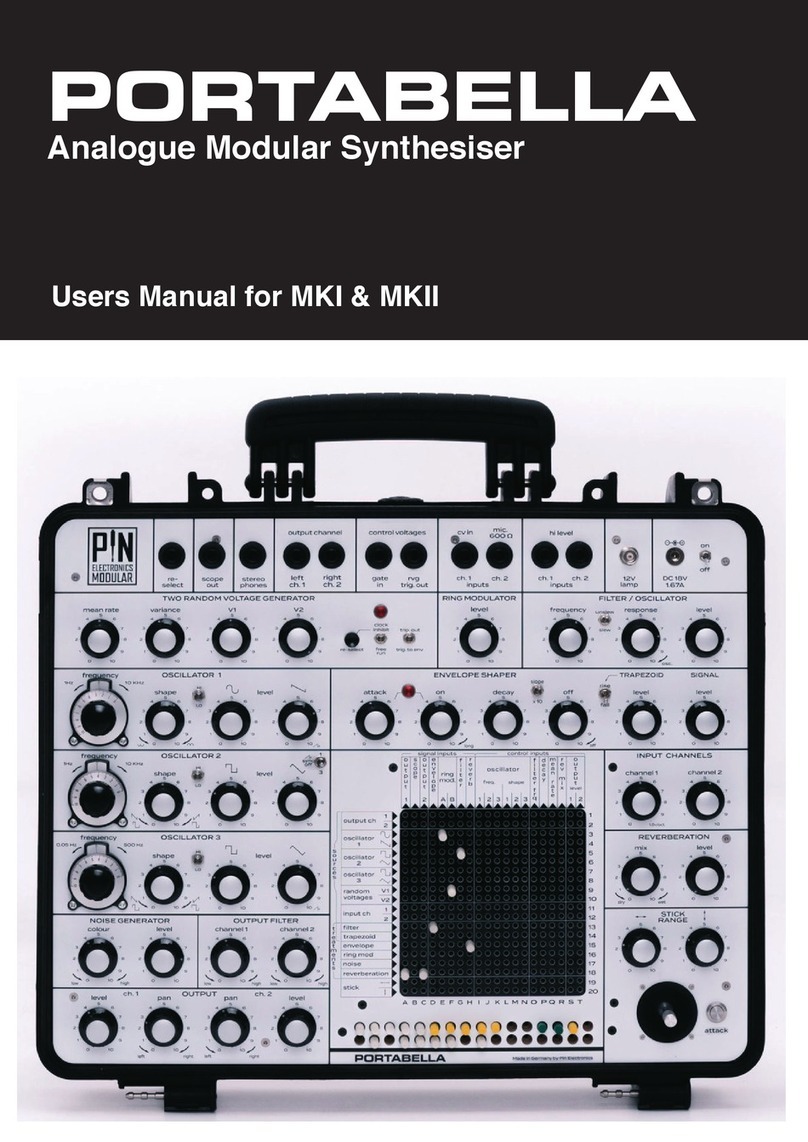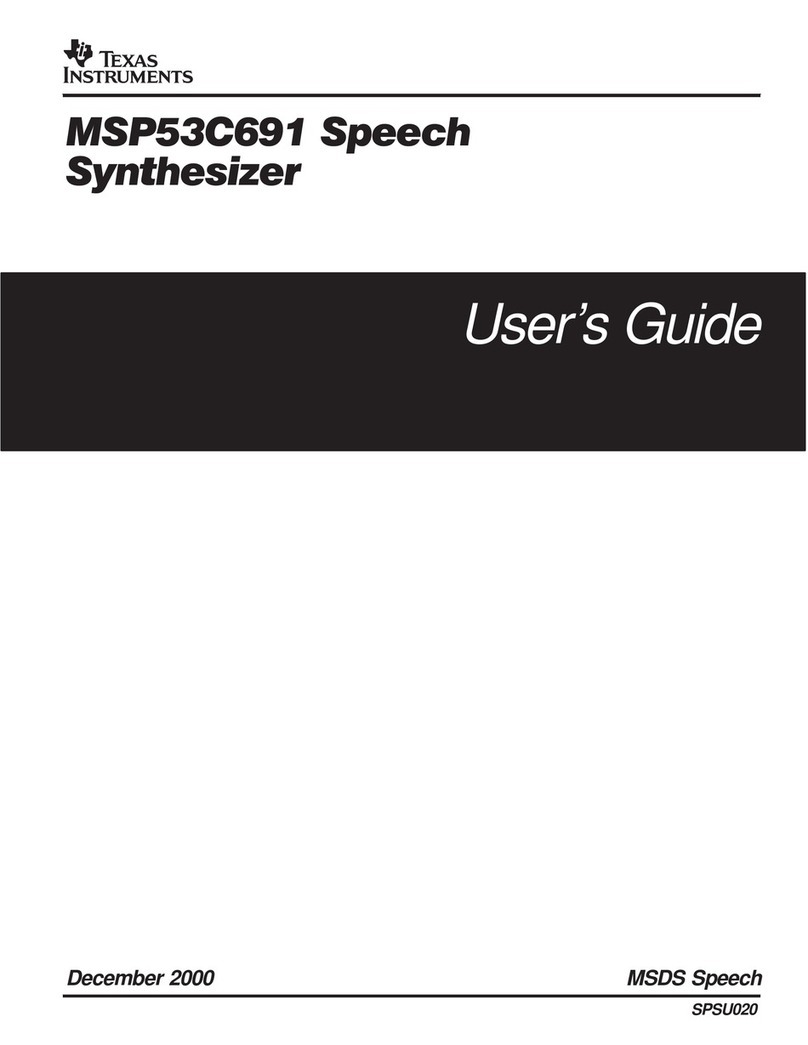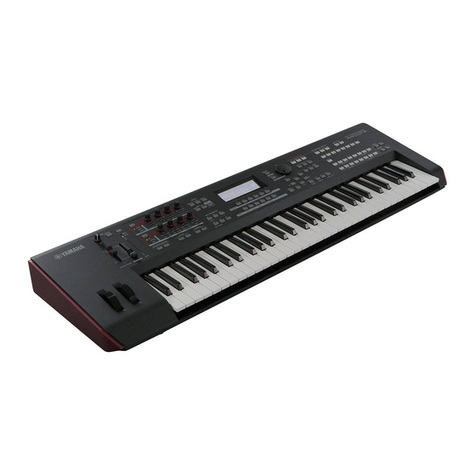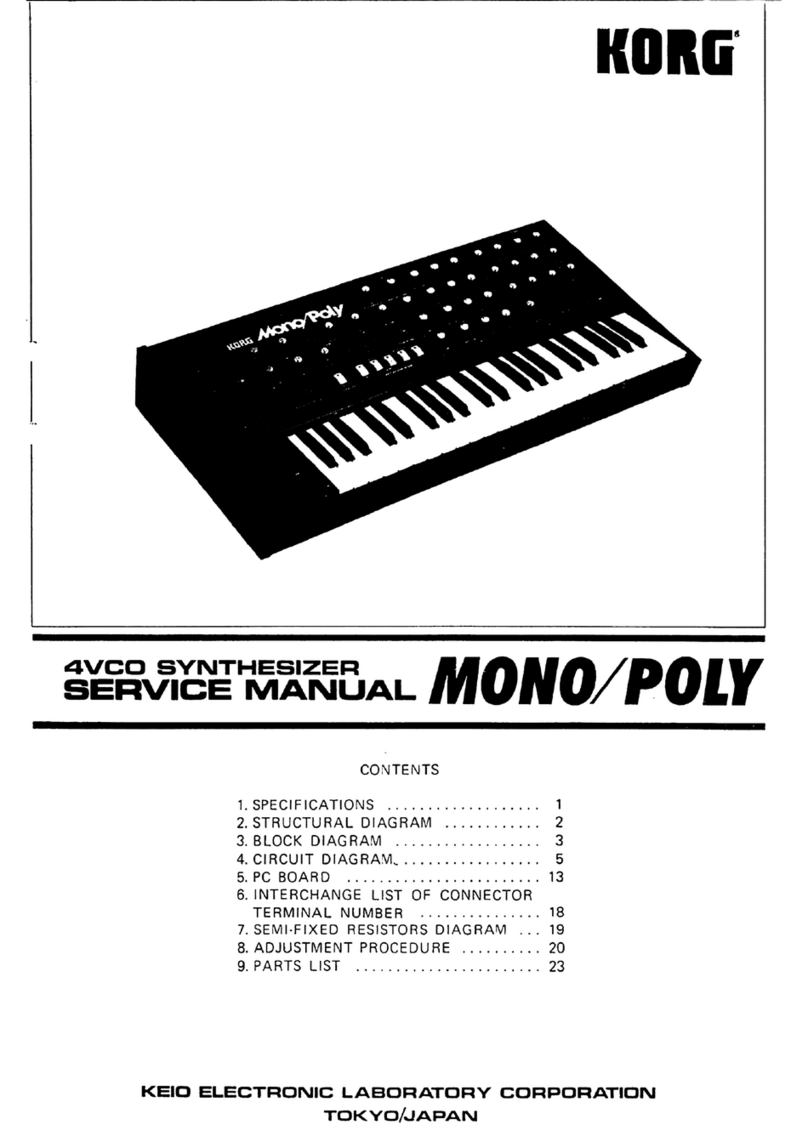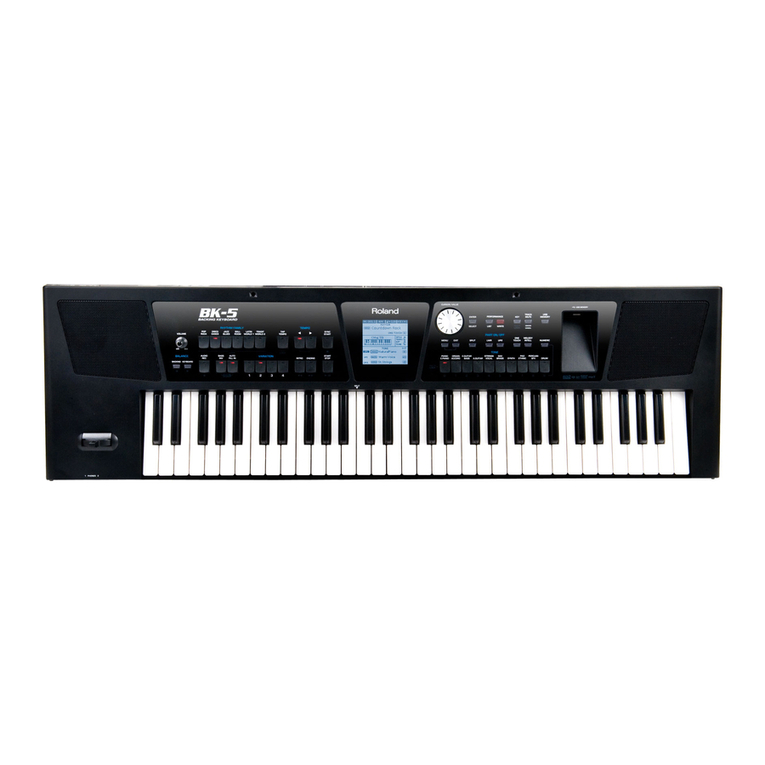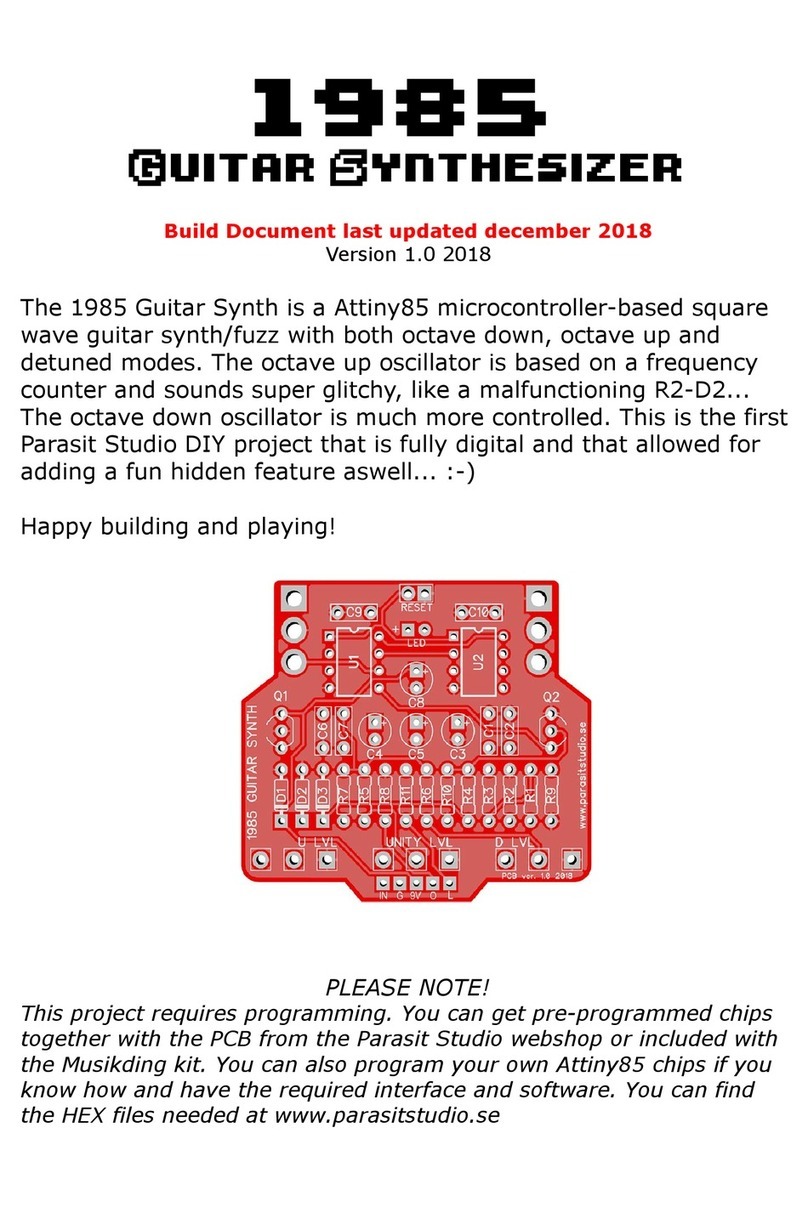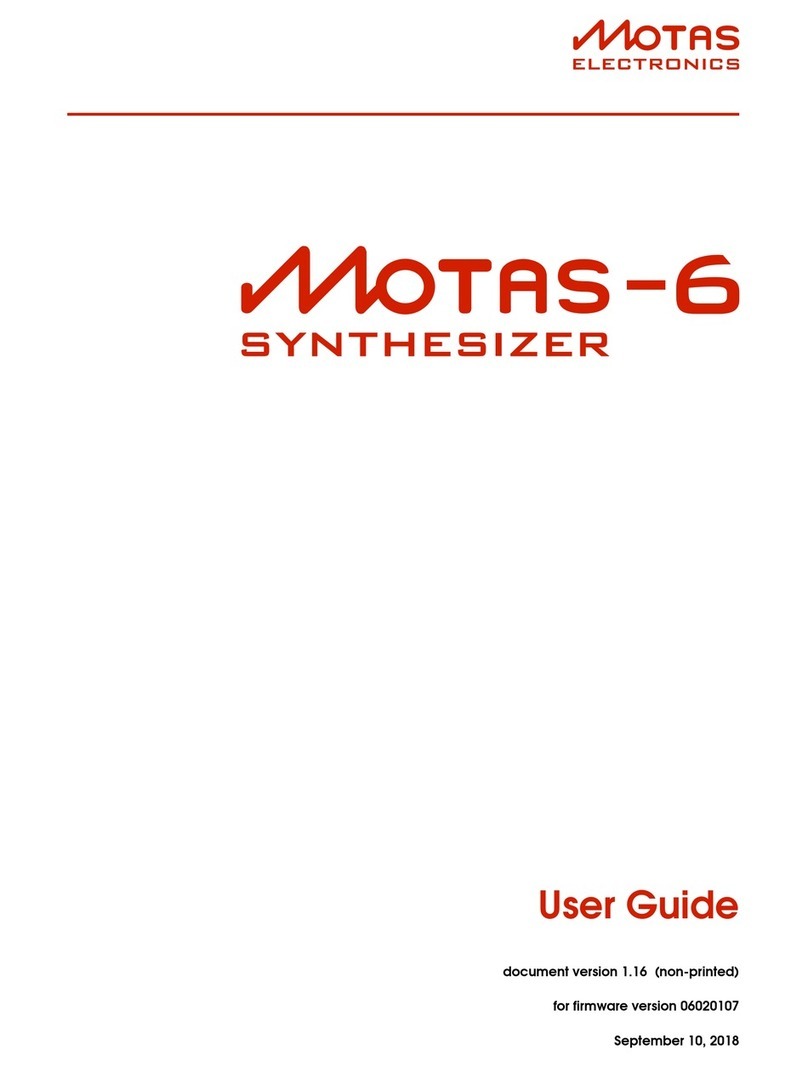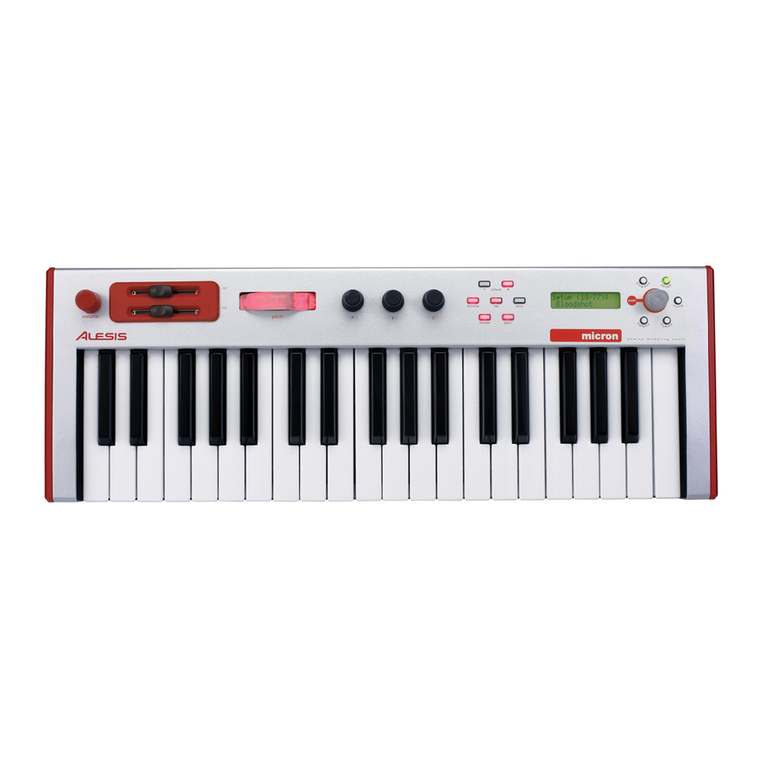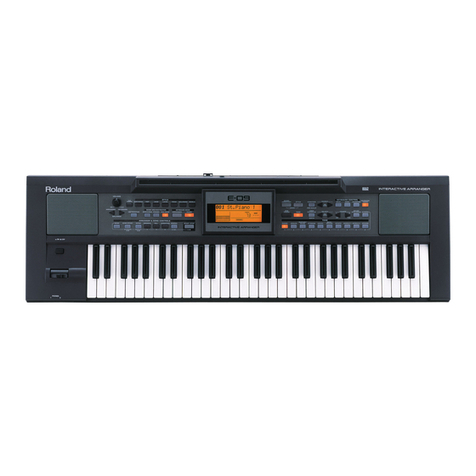METASONIX S-2000 User manual

S-2000 owner instructions
copyright 2013 Metasonix, all rights reserved

IMPO TANT: EAD THIS PAGE FI ST!
CAUTION: to reduce the risk of electrical shock, do not remove the bottom cover.
HIGH OLTAGE INSIDE. No user serviceable parts inside. Refer servicing to qualified service personnel.
WARNING: to reduce the risk of fire or electrical shock, do not expose the S-2000 to rain or moisture.
DETAILED SAFETY INSTRUCTIONS: All the safety and operation instructions must be read before the S-2000 is operated.
RETAIN INSTRUCTIONS: The safety and operating instructions should be retained for future reference.
HEED WARNINGS: All warnings on the S-2000 and in the operating instructions should be adhered to.
FOLLOW INSTRUCTIONS: All operating instructions should be followed.
WATER AND MOISTURE: The S-2000 should not be used near water (e.g. near a bathtub, washbowl, kitchen sink, laundry tub, in a wet basement, near a swimming
pool etc). Care should be taken so that liquids are not spilled onto or near the enclosure.
ENTILATION AND COOLING: The S-2000 normally operates warm to the touch. It MUST be situated so that its location or position does not interfere with
convective cooling. The S-2000 MUST NOT be used on a bed, sofa rug or similar surface which may prevent proper cooling. It is NOT a toy. If the S-2000 is mounted
in a rack or other built-in installation, space must be left around it to allow convection from the case.
HEAT: The S-2000 MUST be situated away from heat sources such as radiators, heat registers, stoves, or other devices (including power amps) that produce heat.
POWER SOURCE: The S-2000 should be connected to a power supply ONLY of the type described in the operating manual or as marked on the S-2000. 12 OLTS
DC ONLY.
POWER CORD PROTECTION: Power supply cords should be routed so that they are not likely to be walked on or pinched by items placed upon or against them.
CLEANING: The S-2000 should only be cleaned with a soft cloth moistened with water. Unplug the power supply before attempting to clean.
NON-USE PERIODS: The POWER supply of the S-2000 should be unplugged from the outlet when left unused for a long period of time.
DAMAGE OR TUBE REPLACEMENT REQUIRING SER ICE:
The S-2000 should be serviced by qualified service personnel when:
-The power supply or plug has been damaged;
-The S-2000 has been dropped, physically damaged, or subjected to force;
-Liquid has been spilled onto the S-2000 or it has been exposed to rain;
-The S-2000 does not appear to work normally (small changes in sound effects are normal for aging tubes).
SER ICING: The user should NOT attempt to service the S-2000. All servicing should be referred to qualified service personnel.
METASONIX LIMITED WA ANTY and standard legal disclaimer
Thank you for purchasing this Metasonix “product”. The following terms and conditions apply:
1. Warranty period is for 90 days from date of purchase with proof of purchase submitted. Warranty covers electrical failure of vacuum tubes and gas-filled tubes,
except in cases explained in 3 below.
. Operating instructions must be followed. This device was intended ONLY for use by AUDIO AND MUSIC PROFESSIONALS. IT IS NOT INTENDED FOR USE BY
ORDINARY CONSUMERS!!
3. Product must not have been damaged as a result of defacement, misuse, abuse, neglect, accident, destruction or alteration of the serial number, improper electrical
voltages or currents, repair, alteration or maintenance by any person or party other than our own service facility or an authorized service center, use or installation of
non-Metasonix replacement parts in the product, or the use of this product outside of the U.S.A. or Canada, or modification of the product in any way, or
incorporation of the product into any other products, or damage to the product caused by accident, fire, floods, lightning, or acts of God, or any use violative of
instructions furnished by Metasonix.
4. Obligations of Metasonix shall be limited to repair or replacement with same or similar unit, at our option. To obtain repairs under this warranty, present the product
and proof of purchase (e.g. bill or invoice) to the authorized Metasonix service center, transportation charges prepaid. When the product for repair, please pack it
very carefully, preferably using the original packaging materials. Please also include an explanatory note.
IMPORTANT: To save yourself unnecessary cost and inconvenience, please check carefully that you have fully read and followed the instructions in this instruction
manual. This warranty is in lieu of all other expressed warranties, obligations or liabilities. ANY IMPLIED WARRANTIES, OBLIGATIONS, OR LIABILITIES,
INCLUDING BUT NOT LIMITED TO THE IMPLIED WARRANTIES OF MERCHANTABILITY AND FITNESS FOR A PARTICULAR PURPOSE, SHALL BE LIMITED
IN DURATION TO THE DURATION OF THIS WRITTEN LIMITED WARRANTY. Some states do not allow limitations on how long an implied warranty lasts, so the
above limitations may not apply to you. IN NO EVENT SHALL WE BE LIABLE FOR ANY SPECIAL, INCIDENTAL OR CONSEQUENTIAL DAMAGES FOR
BREACH OF THIS OR ANY OTHER WARRANTY EXPRESS OR IMPLIED, WHATSOEVER. Some states do not allow the exclusion or limitation of special,
incidental or consequential damages, so the above limitation may not apply to you. This warranty gives you specific legal rights, and you may also have other rights
which vary from state to state.
METASONIX shall not be held liable for any incidental, consequential, or direct damages or expenses associated with the use or misuse of the S- 000. The audio
output of the S- 000 is capable of damaging some types of solid-state audio equipment; such use is entirely at the risk of the user. METASONIX does not guarantee
that any of its products are designed for any particular use or purpose. The entire risk of suitability and performance of this product lies with the user. Products
manufactured and/or sold by METASONIX are not authorized for use as critical components in devices used in life support and other systems whose failure or
performance could result in compromised safety or danger to life or property.
Did we mention the DANGEROUS HIGH OLTAGES inside the S-2000?
DO NOT OPEN THE S-2000 you're not a service technician.
NOTE: All sales are FINAL, especially custom designs.
Only a Metasonix authorized dealer is permitted to return products to Metasonix for a refund or exchange.

Description:
The S-2000 is not merely a new repackaging of old designs. It is a revolution, and a game changer. Metasoni does not make
“clones” of “vintage” gear, so you will find the S-2000 to be completely different from any other musical instrument you have
ever used. It is capable of simulating some classic “vintage” synthesizer sounds, but because of the numerous quirks of
vacuum-tube electronics, it is able to do very much more than that.
Unlike ordinary analog synths, the S-2000 has an all-tube signal path. It is a basic yet fle ible path: Operator 1, which can be
used as a bandpass filter but is more likely to be used as a voltage-controlled oscillator, feeds directly into Operator 2, which
is an identical circuit. Its output goes into the VCA, where an envelope is imposed on the signal.
All the controls to the left of Operator 1 are the CV effect controls. The S-2000 has three “contour” or envelope generators: C1
controls the VCA envelope, and has rise and fall (attack/release) controls. C2 and C3 are transient, or “attack/decay”
envelopes. They can be used as LFOs by activating their REPEAT switches. The speed of the repetition is controlled by both the
rise and fall knobs, so they are used as LFOs with variable duty cycle. The built-in ribbon controller is a standard
SpectraSymbol 400mm industrial position sensor, requiring only a very light touch to activate.
There are three LED indicators on the panel. The VCA tube lights up when C1 is triggered, and the lamps ne t to the controls
for C2 and C3 show their operation. Power is indicated by the tubes themselves, they have hot cathodes that give a slight
orange glow. (Note: it may be difficult to see, especially in bright light. Do NOT assume a tube has gone bad just because you
can't see the hot cathodes.)
Please don't be intimidated by the numerous knobs and switches. They are all there for good reasons, and will
make sense as we go along.
Controls and interfaces:
The S-2000 panel is divided roughly in half, with the CV controls on the left and the audio path controls on the right. First we
start with the audio section.
Tubes!>
< Output jack
Ribbon
controller>
The path is very simple: operator one feeds directly into operator two, which feeds directly into the VCA.
The secret of the S-2000's fle ibility is in the controls for the operators. A basic setting for the controls, seen above, will be
the starting point.
What the operators do is highly dependent on the RESONANCE controls, so their settings are important.
TUNE controls are self-evident, they are usually set to 12 o'clock for most uses.
DRIVE controls the amount of drive level into the ne t stage; they interact with each other and affect the filter effects and
distortion somewhat.
AUDIO MAIN LEVEL is self-e planatory, and the switch ne t to the output jack determines the mode of the VCA envelope. Set
it down to use only the C1 contour to control the envelope, set it up so that C1 is mi ed with C2, making an ADSR envelope
effect.
C1+C2
OPERATOR ONE OPERATOR TWO
C1
only
VCA
C3 CV
level
tune drive C2 CV
level
tune drive audio
main level
Resonance Resonance

<Interface jacks
Ribbon>
The CV section controls the audio section, but is independent of it. The three “contour” generators are basic attack-release
(C1) or attack-decay (C2 and C3) types, which trigger when the ribbon is pressed. A sample-and-hold “freezes” the pitch CV
made by the ribbon when it is released, if CONTROLLER FUNCTION is set to the left. This allows the pitch to be constantly
varied by dragging your finger (or a stylus) up and down the ribbon. If CONTROLLER FUNCTION is set to the right, the
sample-and-hold opens only briefly upon first ribbon pressure, so the pitch is kept so long as the ribbon is held down, but
remains the same even if your finger is moved up and down the ribbon.
The REPEAT switches, when set to the right, turn C2 and C3 into low-frequency oscillators (LFOs). The speed is controlled by
both the rise and fall knobs, allowing for a slow rise and fast drop, or vice versa, or even audio-level signals if both are turned
down.
To begin:
First, set all the CONTOUR controls fully DOWN, counterclockwise. Set the switches for them as shown above. Set the audio
controls as shown on the previous page, and note that RESONANCE control settings will vary with individual S-2000s and their
installed tubes. So you might have to adjust the RESONANCE knobs from the settings shown, to get best results.
Plug in the AC power adapter. The one included (if any) is a “universal” type, and will just need added plug adapters to allow
its use anywhere on earth. The power inlet for the S-2000 is a 2.1mm coa ial jack, center positive. The S-2000 needs 12 volts
DC (not AC!), as clean as possible, at 1.5 amps for initial power-up, and 600 mA thereafter. If you need to replace the power
supply, any type capable of 12 volts DC at 1.5 amps minimum will work.
Connect the output to an amplifier or mi er, so you can listen to the S-2000. Press the ribbon somewhere at the bottom; you
should hear the pitch of Operator 1. Moving your finger up and down the ribbon should change the pitch. (If you hear no
pitch, adjust RESONANCE on Operator 1 until you do.)
Now try adjusting Operator 2's RESONANCE, to hear its filtering effect. Once you get the optimum filter sound, adjusting TUNE
on Operator 2 will give the classic synthesizer “wooooow” effect. Turn up the C2 CV LEVEL knob, so the C2 contour varies the
filter tuning; then adjust C2's rise and fall controls to hear the filter being swept automatically. Now it's a synthesizer!
Note that you will hear a click when pressing or releasing the ribbon. This is typical of pentode tube VCAs, and is NOT a
defect. If it bothers you, adjust C1's rise and fall controls slightly to minimize it. Also note that releasing the ribbon can have
an effect on the pitch when C1's fall control is turned up: this is an odd imperfection of the ribbon controller, and is normal.
Adjust C1 fall for the best desired effect.
Suggestions for use:
Inputs and outputs:
The main audio output is a 1/4” (6.3mm) standard phone jack. Output impedance is 1000 ohms and will drive a 600-ohm load
easily. (It will NOT drive most headphones or a loudspeaker directly.)
CV and gate outputs from the ribbon are accessible from the 1/8” (3.5mm) front-panel jacks at all times. The CV varies from
1.5v to 7v, and the gate is 0-10v.
po er
on
CV
out
po er
on
Gate
out
CV
in
Gate
in
Audio
In
controller
function
CV/gate
int ext
repeat> repeat>
Contour
One (C1)
Contour
T o (C2)
Contour
Three (C3)
rise riserisefall fall fall

The CV and gate inputs (1/8” (3.5mm)) can be used by switching the CV/gate selector switch. The main CV affects both
operators simultaneously, and can be varied from 1.5v to 10v for more than 3 octaves of pitch/filter range, also tunable with
the front-panel tuning knobs. The ma imum pitch range of the two operators is from less than 10 Hz to more than 3 kHz. The
Gate input requires 0-10v DC voltage to fully open the VCA. Note that it only affects C1, and does not trigger C2 or C3.
The audio input feeds into operator one, so that both operators can be used as bandpass filters in series. Or, the resonance on
either one can be decreased so that it passes the signal, so only one operator is used as a filter. Plugging an output into this
jack will change the resonant behaviour of Operator 1, so if its use as a pure VCO is desired, leave this input unconnected to
e ternal gear.
If you wish to hit certain pitches easily, we recommend marking the locations on the ribbon using a permanent marking pen,
and then playing the ribbon with a stylus (a ballpoint pen with the cap left on is perfect). This will allow the careful musician to
play in tune with other instruments, while still having the freedom of pitch bends, small or massive. Be careful not to change
the tuning of Operator 1 so your scale is not upset.
By setting Operator 1 to oscillate and Operator 2 to also oscillate, and detuning them, some primitive FM and sync sound
effects can be realized. This is unknown territory, especially if C2 and C3 are used as audio oscillators to inject more signals
into the operators. All of these effects will cross-modulate and interfere with each other, in ways that are difficult to predict
and impossible to emulate with solid-state electronics, allowing for massive areas of new sound effects for e perimentation.
Technical:
The vacuum tubes in this version of the S-2000 are two 6GH8/6U8s and one 12AW6. Despite not being made anymore, they
are among the most commonplace NOS tubes in the world, and are easy to find. They are run VERY conservatively in the
S-2000, and will be e pected to last many tens of thousands of hours, so stop worrying about “constantly” replacing them. If
you require a set of replacement tubes and can't find them locally or online, contact a Metasoni dealer for spares.
“Tube rolling”, trying different tube types in the sockets to see if they sound different, is NOT recommended. The VCA tube can
be replaced with several types of pentodes or pentagrid converters having 12v heaters, but you are unlikely to notice much
difference in sound anyway.
Note that a 5-volt “TTL-level” gate signal is NOT enough to gate the S-2000's output. You will need 10v to open it.
The connector for the ribbon will accept any of the SpectraSymbol “Softpot” series of ribbon position sensors. They all have
the same pinout. Softpots come in lengths from 25mm to 1000mm (one meter). By making up a suitable cable and mounting
base for the 1-meter Softpot, it will give ma imum resolution of pitch control. (Note: this is an advanced modification and
should only be attempted by e perienced technical personnel.) Any further modification of the S-2000 requires advanced
understanding of the circuit. There are a few changes that are possible, but we normally do not recommend them.
(text is copyright 013 Metasonix. All rights reserved. It is a violation of federal law to reproduce, reuse or duplicate this publication without the express written permission of Metasonix or its assigned representative. Oh, you want to FIX
it? You say you want a SCHEMATIC?? No. Contact us at METASONIX. 495 N Main #109, Lakeport CA 95453, (707) 63-5343, [email protected]. We'll arrange for repair, while refusing to give you a schematic. )
Table of contents
Other METASONIX Synthesizer manuals
